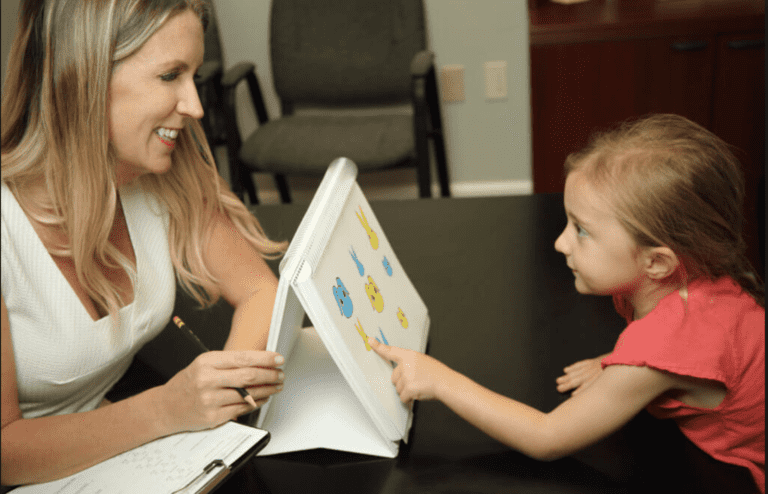Child neuropsychological testing assesses cognitive functions like memory, attention, problem-solving, and language in children. Conducted by trained psychologists, these tests help diagnose learning disabilities, developmental delays, or neurological conditions. Tools like puzzles, memory games, and verbal tasks are used to evaluate different areas of brain function. Results guide interventions and educational strategies, aiding in personalized support for children’s academic and social development. This process ensures early detection and targeted intervention for children facing cognitive challenges.
Developmental Milestones Assessment
Involves systematically tracking a child’s growth across key developmental domains to ensure they are progressing at an expected pace compared to peers. This assessment focuses on motor skills, language acquisition, social interactions, and cognitive abilities. By using standardized tools and age-appropriate benchmarks, clinicians can identify delays or atypical patterns that may indicate developmental disorders or neurological issues.
Early identification through this assessment is crucial for timely intervention, allowing for the implementation of strategies and therapies that support optimal development. The assessment provides a comprehensive overview of a child’s strengths and areas needing support, guiding parents, educators, and healthcare providers in fostering the child’s overall growth and development.
Cognitive Functioning Evaluation
Assesses various mental processes such as intelligence, memory, attention, and executive functions like planning and problem-solving. Through standardized tests and observations, clinicians gather data on a child’s cognitive abilities, identifying strengths and weaknesses. This evaluation may include IQ tests, memory recall tasks, attention span assessments, and problem-solving exercises.
Understanding a child’s cognitive profile is essential for diagnosing learning disabilities, ADHD, or other neurodevelopmental disorders. It helps in creating personalized educational plans and interventions to support academic achievement and daily functioning. By pinpointing specific cognitive challenges, the evaluation enables targeted strategies to enhance the child’s learning and development, ensuring they reach their full potential.
Behavioral Observation and Analysis
Involves systematically observing a child’s behavior in various settings to understand their emotional and social functioning. Clinicians assess how a child interacts with peers and adults, responds to different stimuli, and manages emotions. This process includes observing behaviors in structured and unstructured environments, as well as using standardized behavior rating scales and checklists.
By analyzing patterns, triggers, and responses, clinicians can identify behavioral concerns such as aggression, withdrawal, or hyperactivity. This information is crucial for diagnosing conditions like ADHD, autism spectrum disorder, or anxiety disorders. The analysis guides the development of tailored interventions and support strategies, helping children improve their social skills, emotional regulation, and overall behavior.
Language and Communication Assessment
Evaluates a child’s ability to understand and use language effectively. This includes receptive language (comprehension), expressive language (speaking), and pragmatic skills (social use of language). Clinicians use standardized tests, observational checklists, and interactive tasks to assess vocabulary, grammar, sentence structure, and conversational abilities.
This evaluation also covers non-verbal communication, such as gestures and facial expressions. Identifying language delays or disorders, such as speech sound disorders, expressive language disorder, or pragmatic language impairment, is crucial for early intervention. The assessment informs the development of individualized therapy plans, targeting specific areas of need to enhance communication skills. Effective language and communication abilities are foundational for academic success and social interactions.
Motor Skills and Coordination Testing
Assessing fine motor skills (e.g., hand-eye coordination, writing ability) and gross motor skills (e.g., balance, coordination, strength) provides insights into a child’s physical development and potential motor delays or deficits. These tests help identify issues that may affect activities of daily living or academic performance.
Fine Motor Skills Assessment
Evaluates tasks requiring precise hand-eye coordination and dexterity, such as writing, buttoning, and using utensils. Standardized tests measure the accuracy, speed, and efficiency of these movements, identifying difficulties in fine motor control that can impact daily living and academic performance.
Gross Motor Skills Assessment
Focuses on larger body movements, including balance, coordination, strength, and agility. Activities like running, jumping, and climbing are analyzed to assess overall motor development, helping identify potential delays or impairments that may affect physical activity and mobility.
Visual-Motor Integration Testing
Measures the ability to coordinate visual perception with motor actions. Tasks like copying shapes, drawing, and assembling puzzles help determine how well a child integrates visual information with motor responses, crucial for activities requiring visual-motor coordination.
Hand-Eye Coordination Evaluation
Assesses the ability to synchronize hand movements with visual input. Activities such as catching a ball, stacking blocks, and threading beads are used to evaluate coordination, identifying issues that may impact daily tasks and academic performance, including sports and handwriting.
Postural Control and Balance Testing
Examines the ability to maintain stability and control body posture during various activities. Balance tests, such as standing on one foot or walking on a balance beam, help identify issues with postural control that could affect mobility, physical activities, and injury prevention.
Sensory Processing Evaluation
Assesses how a child perceives, processes, and responds to sensory information from their environment. This includes inputs such as sight, sound, touch, taste, smell, and proprioception (body position). Clinicians use standardized tests and observational methods to evaluate the child’s sensory modulation, discrimination, and integration abilities.
Activities might include identifying textures by touch, responding to auditory cues, or navigating spaces based on visual input. The evaluation helps identify sensory processing disorders, such as hypersensitivity (over-responsiveness) or hyposensitivity (under-responsiveness) to stimuli. Understanding these sensory preferences and challenges is crucial for developing personalized strategies and interventions, enhancing a child’s ability to participate fully in daily activities, learning environments, and social interactions.
Social and Emotional Functioning Analysis
This involves evaluating a child’s social skills, emotional regulation, empathy, and ability to form and maintain relationships with peers and adults. Clinicians observe interactions, use questionnaires, and conduct interviews to assess social responsiveness and emotional resilience, identifying areas where support or intervention may be needed.
- Emotional Regulation Assessment evaluates how children manage emotions like frustration and anxiety. Observations and standardized tools identify difficulties, guiding interventions to build coping strategies.
- Social Skills Evaluation assesses interaction abilities with peers and adults. Tools and observations identify areas for improvement, guiding targeted social skills training.
- Peer Relationship Analysis examines friendships, group interactions, and conflict resolution skills. Identifying challenges helps enhance social integration.
- Empathy and Perspective-Taking Assessment measures understanding of others’ emotions and viewpoints. Tools identify areas for empathy development.
- Behavioral and Emotional Self-Report gathers children’s perceptions of feelings and behaviors, offering insights into emotional well-being and social experiences.
Diagnostic Impressions and Recommendations
Summarize findings from comprehensive assessments to guide intervention and support strategies. Clinicians compile diagnostic impressions based on observed behaviors, test results, and developmental milestones. These impressions outline any identified neurodevelopmental, cognitive, or emotional challenges, such as ADHD or autism spectrum disorders.
Recommendations are tailored to address specific needs, suggesting therapies, educational accommodations, and parental support strategies. The goal is to optimize a child’s development and well-being by providing targeted interventions that foster academic success, social competence, and emotional resilience. Regular reassessment ensures that recommendations evolve with the child’s progress and changing needs, aiming for continuous improvement in their overall functioning and quality of life.
Conclusion
Neuropsychological Testing at Abbey Neuro Psychology Clinic in Palo Alto provides crucial insights into a child’s cognitive, emotional, and social development. From assessing fine motor skills to evaluating sensory processing and emotional regulation, these tests offer a comprehensive understanding of each child’s unique needs. Diagnostic impressions and tailored recommendations ensure effective intervention strategies, supporting academic success and overall well-being. For more information or to schedule an appointment, contact Abbey Neuro Psychology Clinic at 650-590-5743 or visit us at 366 S. California Avenue, Suite 14, Palo Alto, CA 94306.






